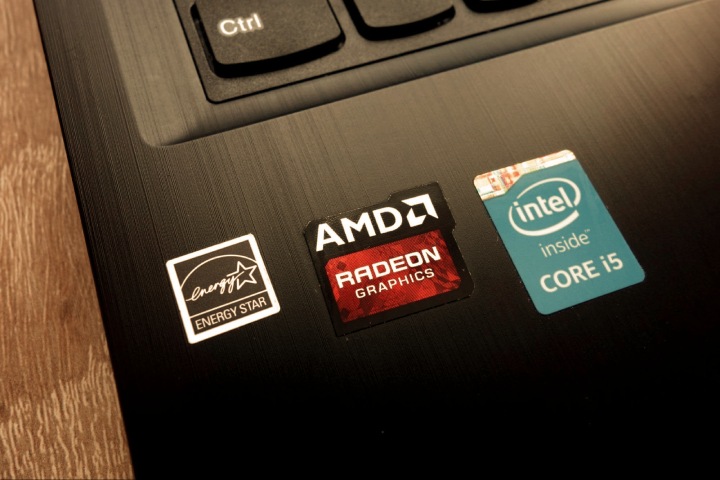Each processor has a specific name that can tell a lot. By the word, you can understand the approximate level of performance and many other parameters.
AMD Processors
With the release of Ryzen processors, AMD began to use a new product naming that uses Intel logic. Before that, the labeling for FX processors was different. Let’s take a look at what the numbers and letters in the names of AMD processors mean.
Brand
This part consists of the name of the company and the brand of the processors. In addition to Ryzen, there are even less powerful Athlon processors, professional Ryzen Threadripper, and server Epyc. Interestingly, Intel and AMD did not abandon their past famous brands Celeron, Pentium, and Athlon when switching to new processors. These processors now occupy the most affordable segment in the lineup of both companies.
Processor Family
All Ryzen are divided into several families in terms of performance level. The higher the number, the more influential the processor:
- Ryzen 3 – entry-level,
- Ryzen 5 – Medium
- Ryzen 7 – Pre-Top Level
- Ryzen 9 is top tier.
The main differences are in the number of cores and threads. In addition, clock speeds, cache sizes, and other specifications may vary.
There are also processors with the PRO designation, for example, the Ryzen 7 PRO 3700. These are processors for corporate users; they support encryption technologies and additional security features. But nobody forbids using them in home systems either.
Generation
It is important here not to confuse the generation of processors and the generation of the Zen architecture on which these processors are based:
- 1st Gen Ryzen – Zen architecture
- 2nd Gen Ryzen – Zen + architecture
- 3rd Gen Ryzen – Zen 2 architecture
- 5th Gen Ryzen – Zen 3 architecture.
Please note that the 4th generation consists of APUs and mobile processors and is still based on Zen 2. In addition, processors within the same generation may be based on different architectures. So, the mobile processors Ryzen 3 5300U, Ryzen 5 5500U and Ryzen 7 5700U are Zen 2.
The difference between generations is expressed in performance, primarily due to the refinement of the architecture. It is both better work with memory, and an increase in performance per Core, increasing the maximum clock frequency. But the number of cores is the same. So, Ryzen 5 1600 and Ryzen 5 5600 each have six cores and 12 threads.
Processor Number
This item is called SKU (Stock Keeping Unit), which can be translated into Russian as an article in English-speaking countries. This number indicates the position of a particular processor within the same family. There is also an even more exact name, and the difference can be significant. For example, the Ryzen 9 3900X has 12 cores, while the 3950X has 16.
Note that the numbers do not repeat across families: 3600 is always Ryzen 5, and 3700 is Ryzen 7. There is no Ryzen 5 3700 or Ryzen 7 3600.
Letter Suffix
There may not be a suffix, in which case you have an ordinary desktop processor. Overclocking is not indicated in any way, as all Ryzen desktop processors have an unlocked multiplier.
- G – has built-in graphics;
- E – energy-efficient processor with the reduced thermal package;
- GE – energy-efficient processor with reduced thermal insulation and integrated graphics;
- X – processors with higher clock speeds overclocked by the manufacturer;
- XT – even more efficient processors with higher maximum frequencies;
- H – performance series for notebooks;
- HX – an even more powerful series of notebook processors;
- HS – a unique series of AMD processors, the performance of which is equal to the H series, but the thermal package is reduced;
- You are an energy-efficient series for notebooks with a reduced GVW.
Intel Processors
Intel has a reasonably simple processor naming scheme and price category, performance, an integrated video core, and other parameters are encrypted in the title. For example, Intel Core i5-9600K. However, this can be confusing for an unprepared buyer; let’s take a closer look at the marking of Intel processors using specific examples.
Brand or trademark refers to both the company name and the processor. Intel has many processor flavors: Celeron, Pentium, Core, and Xeon, each with a different challenge. For example, Celeron and Pentium are affordable processors for tasks where high performance is not required, Core is excellent for games and work applications, and Xeon is server processors.
Processor Family
Within the Intel Core trademark, there is a differentiation in terms of performance. Thanks to the numbers in the name, you can understand to which level the processor belongs:
- Core i3 – entry-level;
- Core i5 – mid-range;
- Core i7 – pre-top level;
- Core i9 is the top tier.
The main differences are in the number of cores and threads. In addition, clock speeds, cache sizes, and other specifications may vary.
Generation
In 2021, the 11th generation of processors is relevant. But this does not mean that all the previous ones are immediately obsolete. It is essential to know the differences between ages, as the characteristics are constantly changing. So, in the seventh generation, Core i5 processors had only four cores, but in the eighth generation, there were already 6 of them.
Processor Number
This item is called SKU (Stock Keeping Unit), which can be translated into Russian as an article in English-speaking countries. By the number, you can understand the position of a particular processor in its family. They differ mainly in the base and maximum clock speeds and cache memory: the higher this figure, the more influential the processor. Simply put, the i5-9600 is better than the i5-9400. Please note that the numbers are not repeated in different families: 9600 is always i5, and 9100 is i3. There is no i5-9100 or i3-9600.
For example, in older generations, and even more detailed designation was often found, for example, the Core i7-4770K. It is also common in modern mobile versions. Moreover, the differences are more significant than those of desktop processors. For example, the i7-10850H has only six cores, while the i7-10870H has 8.
Letter Suffix
Should note right away that it may not exist at all – i3-9100, i7-8700, etc. It means that the processor does not have any specific designations. It is a standard desktop CPU.
- K – unlocked multiplier, that is, the processor can be overclocked if there is a motherboard on the Z-chipset;
- F – lack of a built-in video core, that is, you cannot do without a separate video card;
- G1-G7 – processors with the new integrated graphics Intel Iris X;
- G – comes bundled with discrete graphics, for example, on the Intel NUC platform;
- X or XE – processors from the X-line. Cores differ from ordinary ones by a socket and a large number of cores;
- H – performance series for notebooks;
- HK – Unlocked Multiplier Performance Series for Notebooks;
- HQ – performance series for laptops, four cores;
- T – desktop processors with a reduced thermal package;
- U – Energy Efficient Series for Notebooks with Reduced Thermal Packing;
- Y is an energy-efficient series for notebooks with the lowest possible Thermal Pack.
Various combinations are also possible, such as i7-10700KF, which means no integrated graphics and support for overclocking.
Also Read: Work From Home – Benefits Of Remote Workplaces








